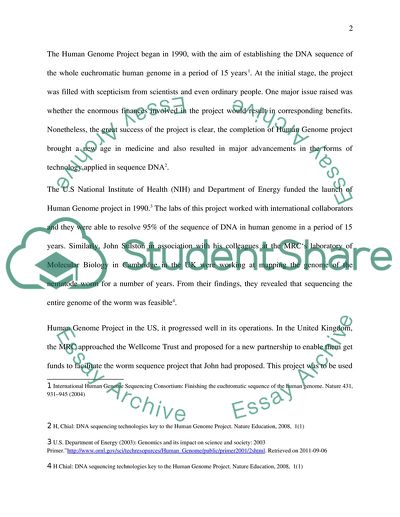Cite this document
(“The Human Genome Project Essay Example | Topics and Well Written Essays - 3500 words”, n.d.)
The Human Genome Project Essay Example | Topics and Well Written Essays - 3500 words. Retrieved from https://studentshare.org/biology/1579653-human-genome-was-determined-has-the-human-genome-project-lived-up-to-expectations
The Human Genome Project Essay Example | Topics and Well Written Essays - 3500 words. Retrieved from https://studentshare.org/biology/1579653-human-genome-was-determined-has-the-human-genome-project-lived-up-to-expectations
(The Human Genome Project Essay Example | Topics and Well Written Essays - 3500 Words)
The Human Genome Project Essay Example | Topics and Well Written Essays - 3500 Words. https://studentshare.org/biology/1579653-human-genome-was-determined-has-the-human-genome-project-lived-up-to-expectations.
The Human Genome Project Essay Example | Topics and Well Written Essays - 3500 Words. https://studentshare.org/biology/1579653-human-genome-was-determined-has-the-human-genome-project-lived-up-to-expectations.
“The Human Genome Project Essay Example | Topics and Well Written Essays - 3500 Words”, n.d. https://studentshare.org/biology/1579653-human-genome-was-determined-has-the-human-genome-project-lived-up-to-expectations.


